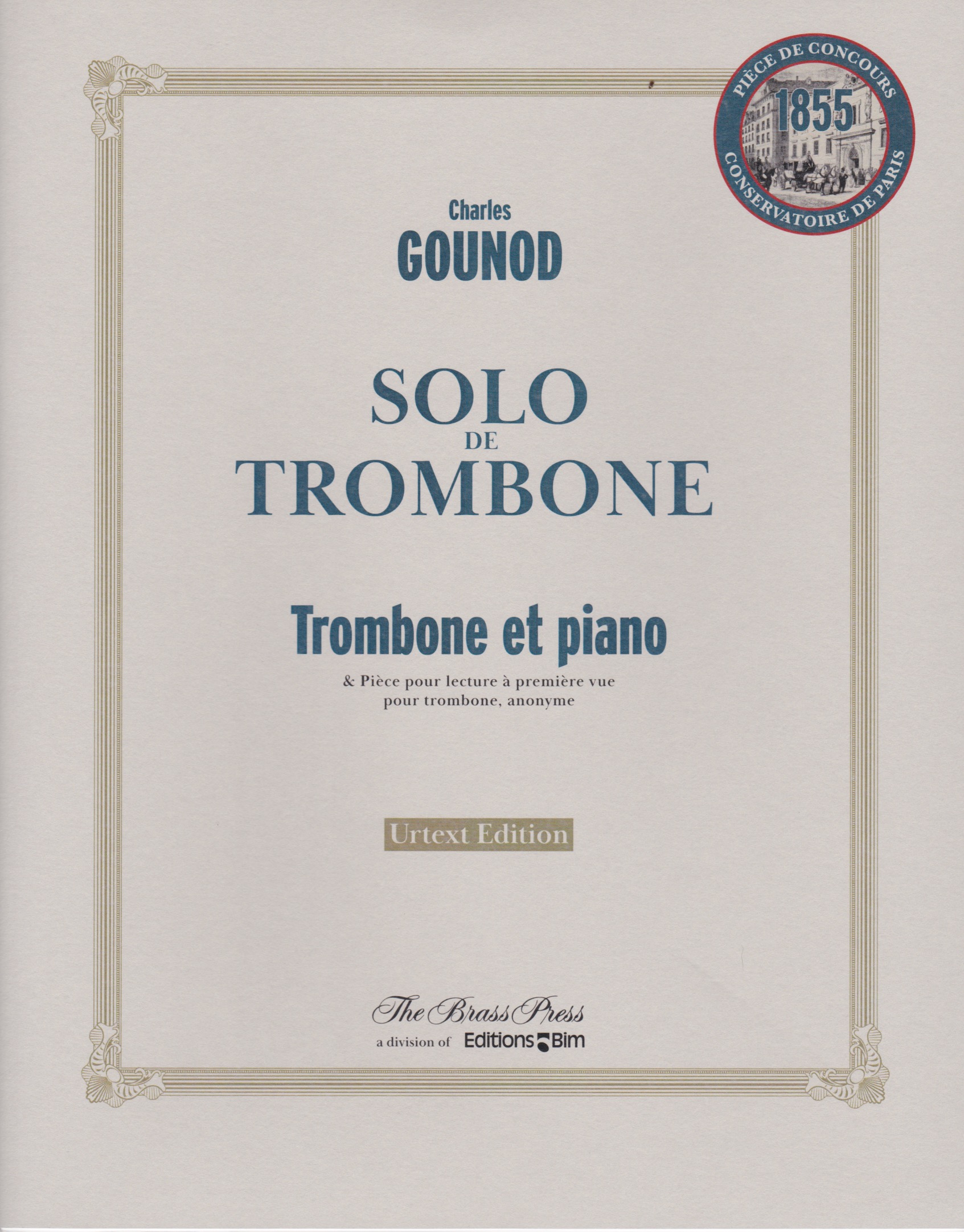Charles Gounod
 Solo de Trombone:
Solo de Trombone:
Trombone and piano
Sion, , Switzerland
Publisher: Editions Bim
Date of Publication: 2020
URL: http://www.editions-bim.com
Score and solo part.
Primary Genre: Solo Tenor Trombone - with piano
 Solo de Trombone:
Solo de Trombone: Trombone and piano
Sion, , Switzerland
Publisher: Editions Bim
Date of Publication: 2020
URL: http://www.editions-bim.com
Score and solo part.
Primary Genre: Solo Tenor Trombone - with piano
Charles Gounod (1818-1893) was one of the leading French composers of the 19th century. His compositional output was considerable, including twelve operas. Today only two (Faust, Romeo et Juliette) receive occasional performances along with some minor works (Ave Maria and Funeral March of a Marionette). While historically he occupies second place to important romantic age French composers such as Berlioz, Franck, Saint-Saëns, and Bizet, he nevertheless is an important composer for the trombone, with his singular contribution just recently coming to light. Gounod was commissioned to compose the required test piece for the graduating class, two trombonists, of the Conservatoire de Paris in 1855. Included in this Bim publication, Solo de Trombone, is detailed and interesting information in English, French, and German by Laurent Madeuf:
Gounod’s Solo de Trombone was never published by the author, and the score soon disappeared, being declared lost by the ensemble of biographers of the composer until recently. Two manuscripts have enabled the reconstitution of this edition. The first - a trombone part, was discovered in a flea market at the end of the 1990s, the second belongs to Frantz Couvez, trombonist, who has a photocopy given to him by his teacher, Gilbert Moisand. Different stylistic elements quickly confirmed that this is a genuine Gounod piece: the general style, close to the six melodies for horn and piano of 1839, certain harmonic detours-even if the style is not yet quite personal - and the piano accompaniment, which is not without some problems. The non-pianistic aspect of other works of the composer, already striking in the Melodies for horn, is indeed found here: Gounod was not a pianist and hated to produce this kind of reduction, a detail confirmed by Gérard Condé. This edition therefore reorganizes certain passages (complete or redistributed harmony, improved pianistic figurations, superimposed hands…). The Solo is written in two movements. The first, in G minor, begins with an andante introduction, astonishingly developed in relationship to the entire piece. This tutti leads to an adagio cantabile in 6/8, a true aria with Italian sensuality. The instrumental line, supported by a regular swinging triplet, follows the contours of a vocal phrase characteristic of Bellini or Donizetti, then in vogue in Paris. The second part of the piece in molto pomposo and ben marcato in B flat major, acts as a cabalette, concluding with figures in triplets of a not insignificant difficulty.
It is through the commissioning system of the Paris Conservatoire that we have a good deal of solo music for the trombone. This work is a wonderful, recent discovery to the romantic age standard solo trombone repertoire, taking its rightful place alongside works by Guilmant, Saint-Saëns, Berlioz, and David. An additional and interesting inclusion in this edition is the sight reading piece that was required in 1855. The layout, paper quality, and printing are first class in every detail.Reviewer: Karl Hinterbichler
Review Published June 24, 2023
Review Published June 24, 2023